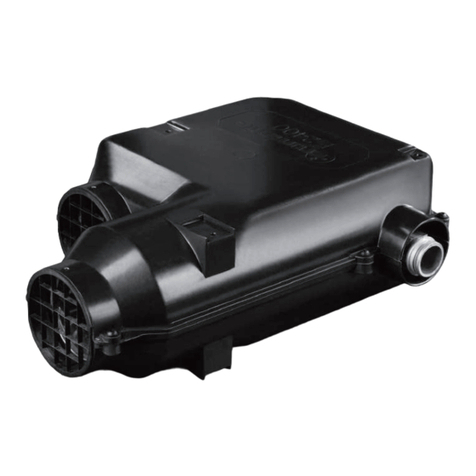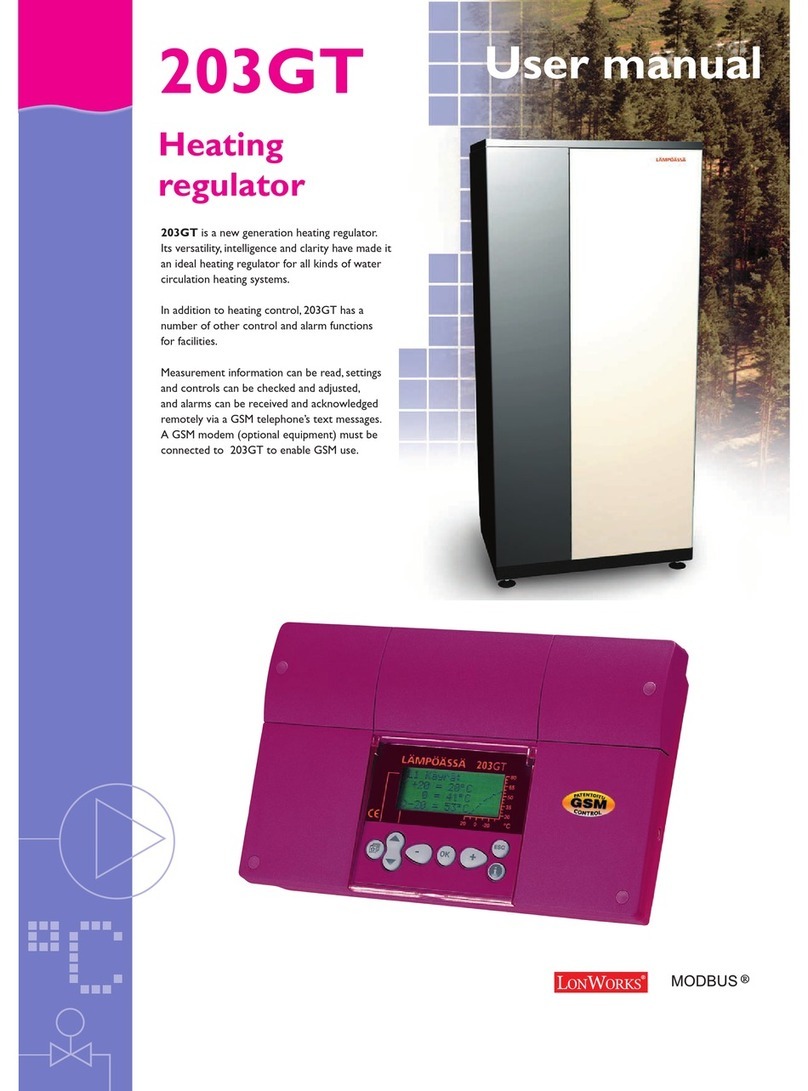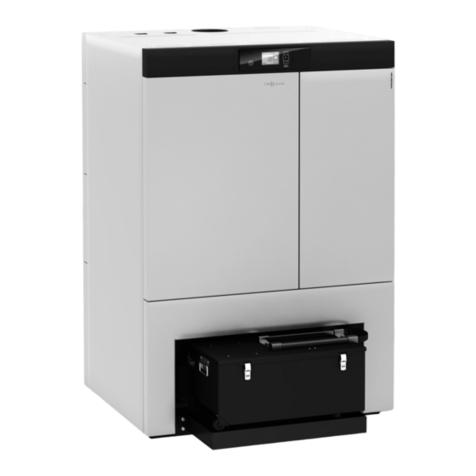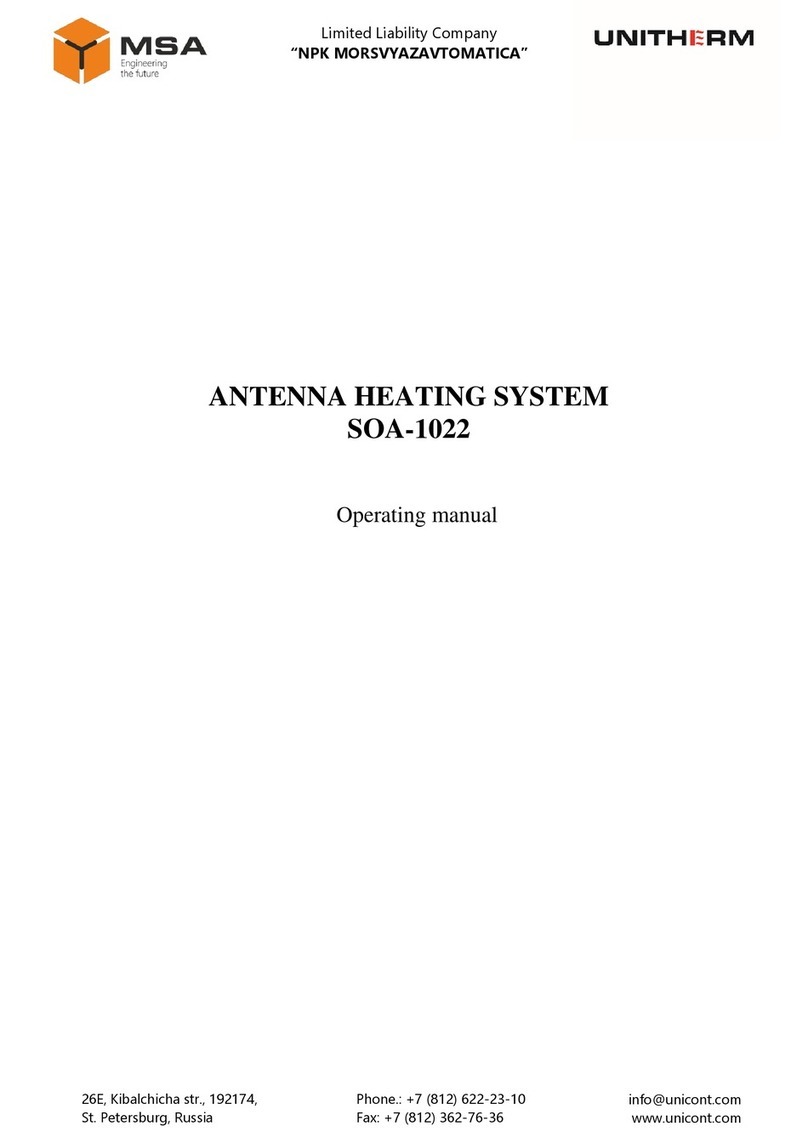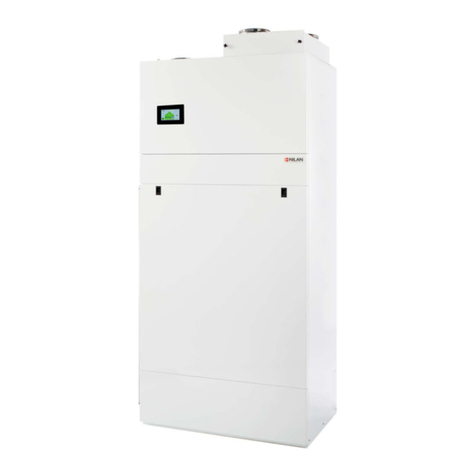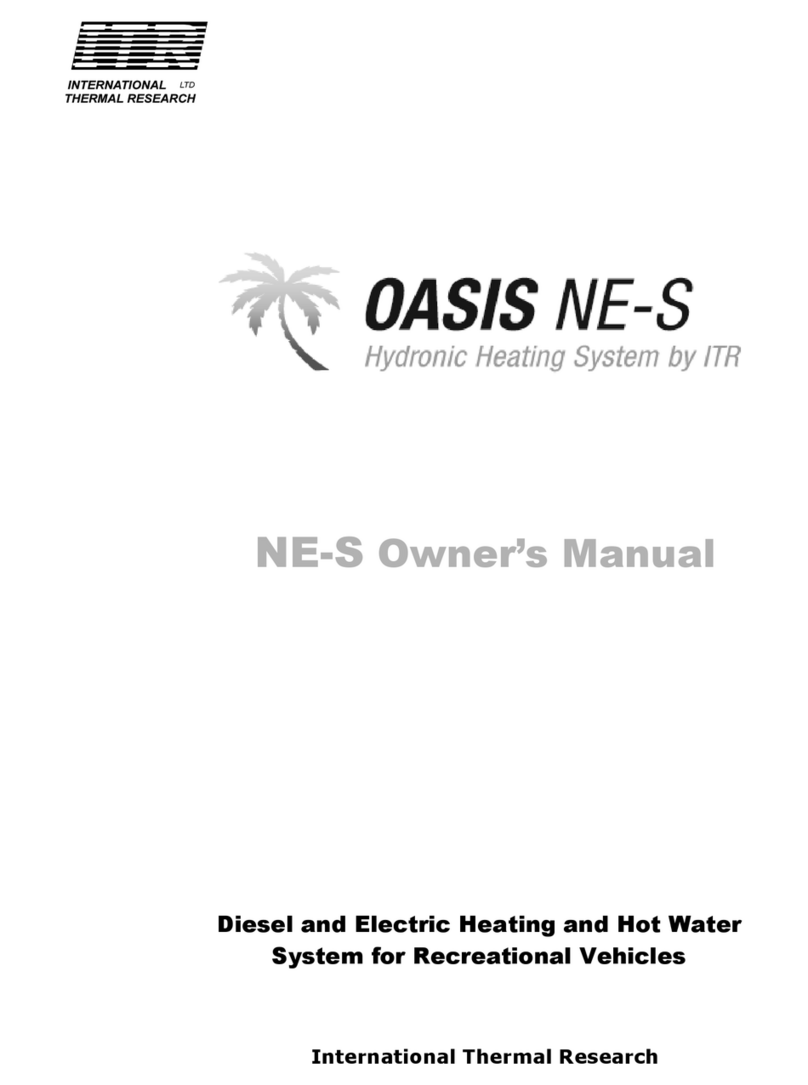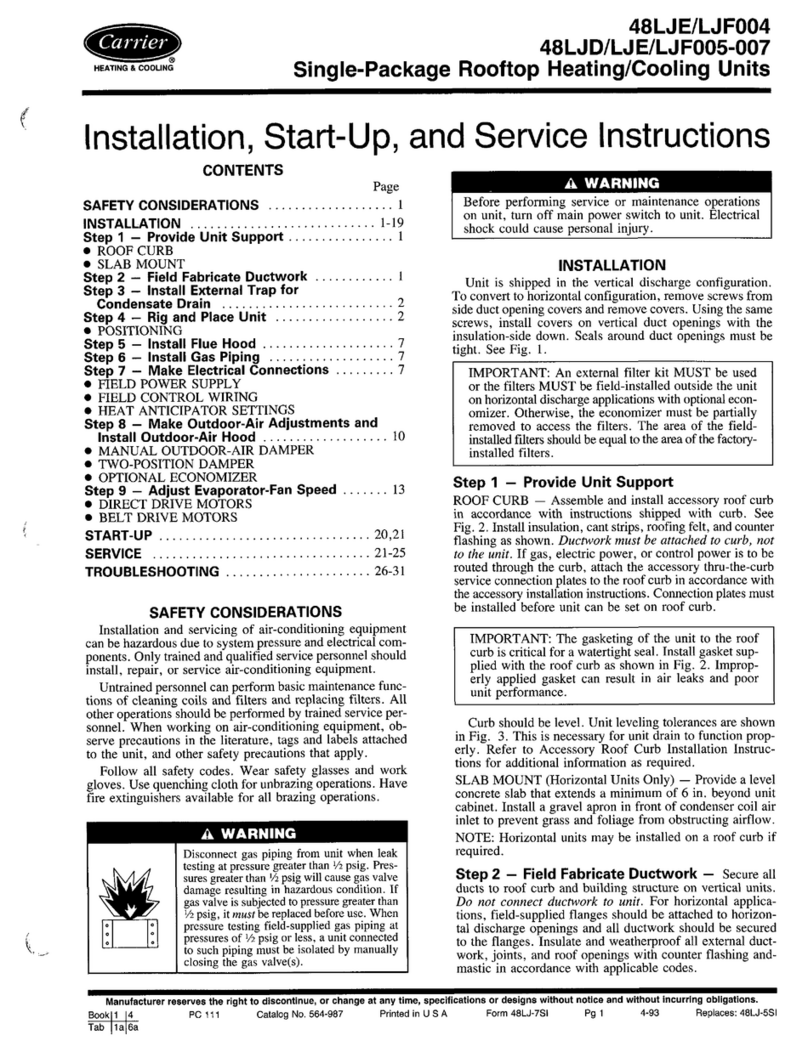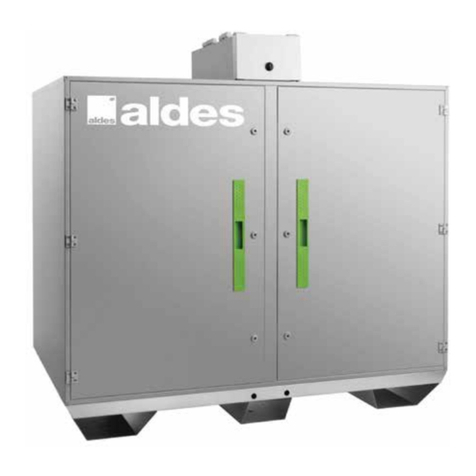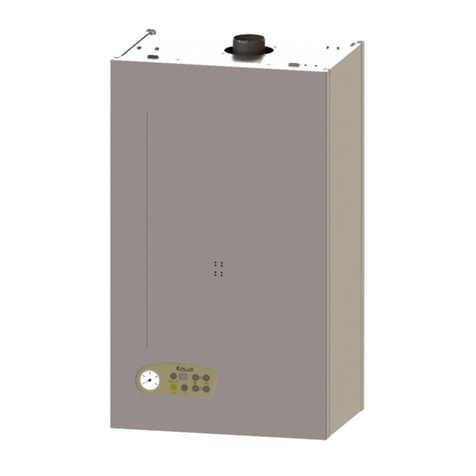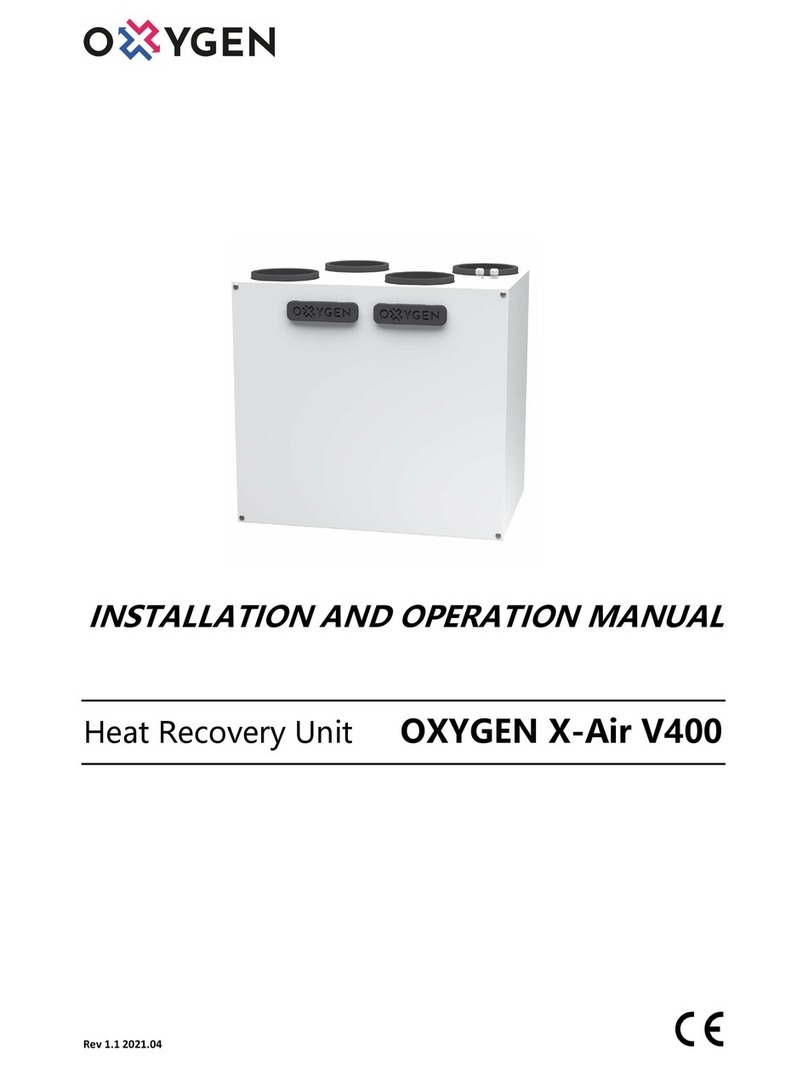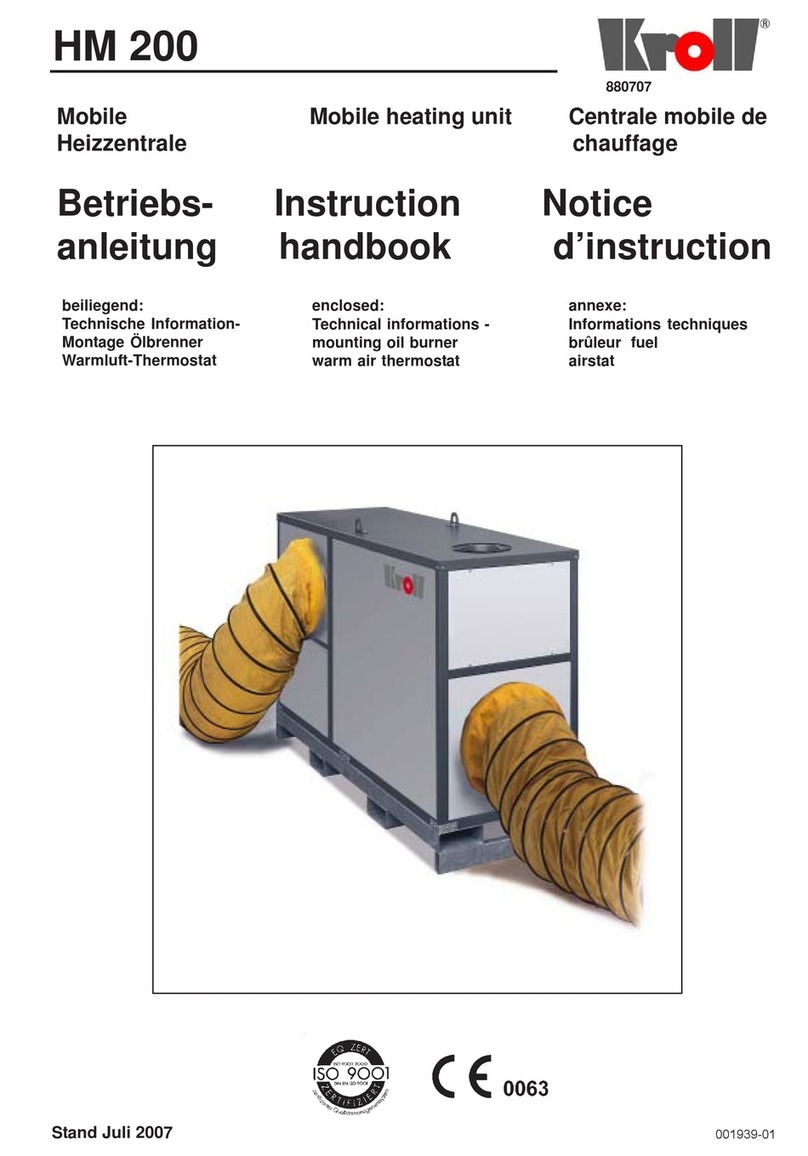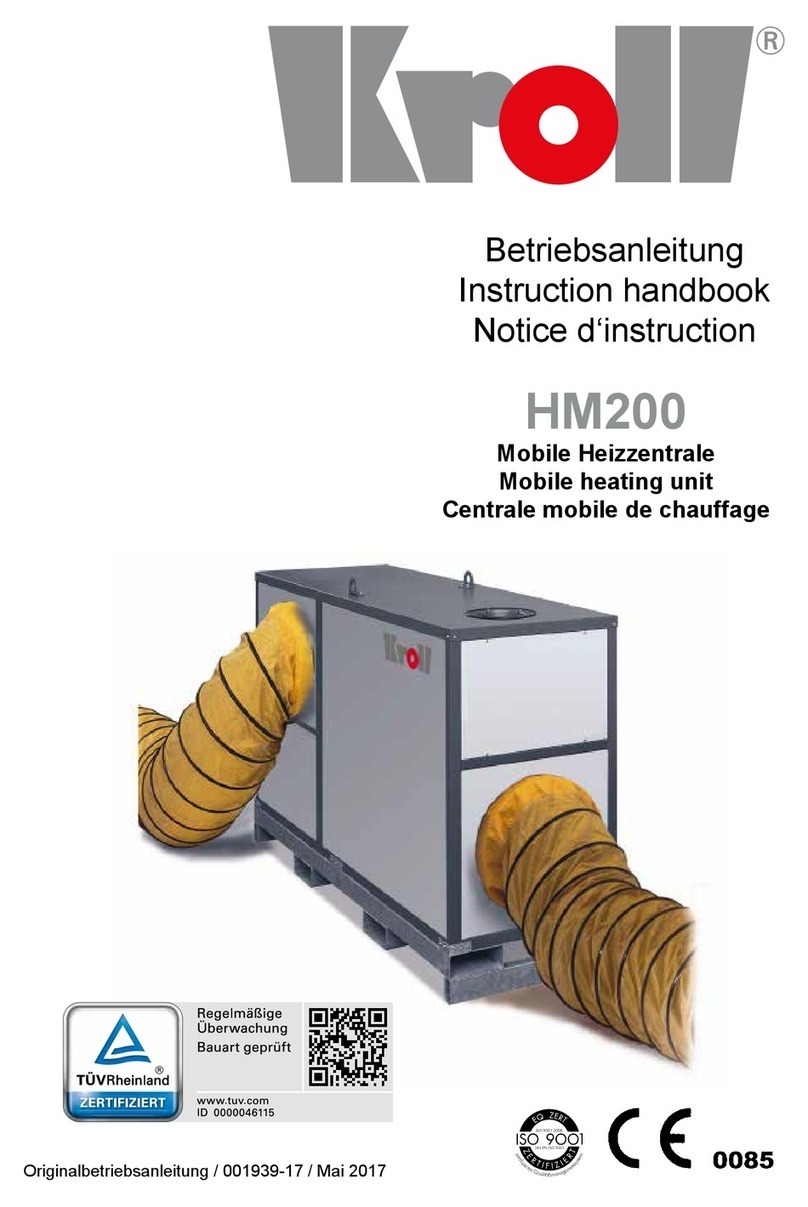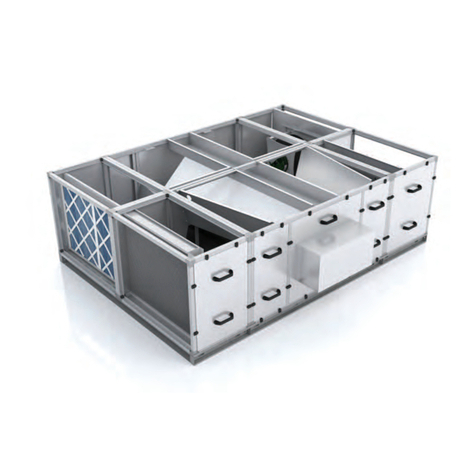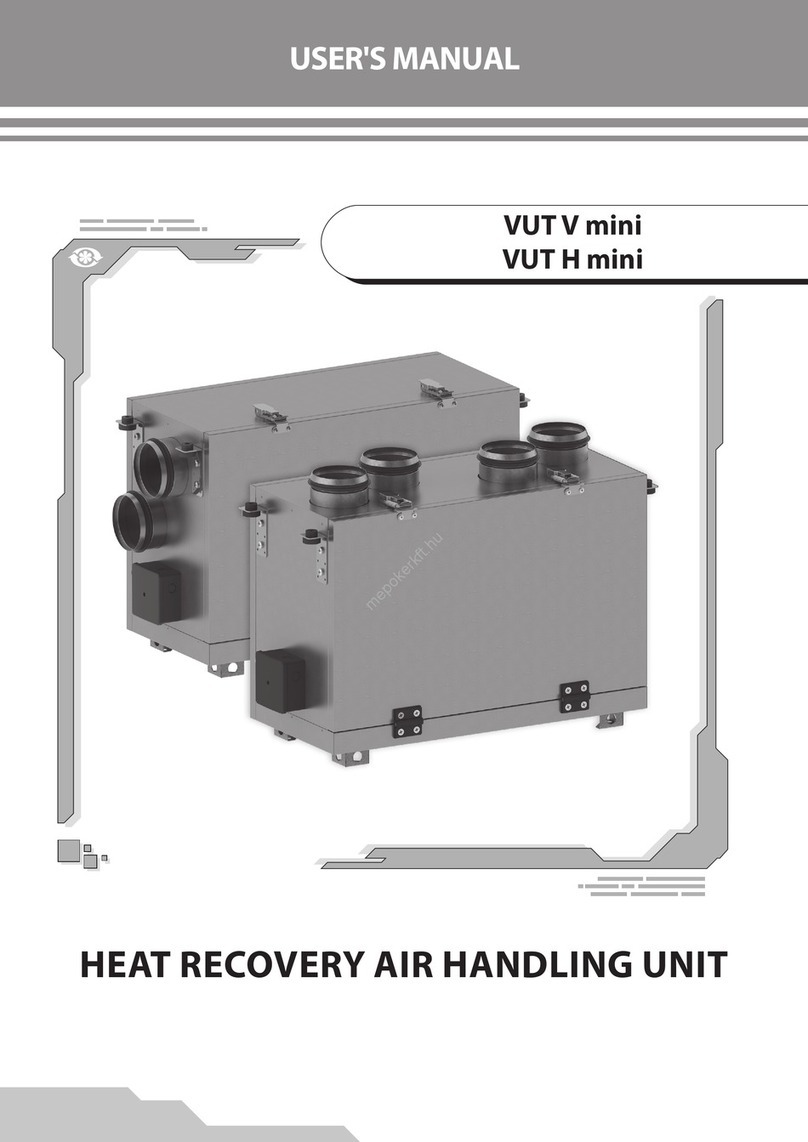
2PRC - Manual |priceindustries.com
PRC
INSTALLATION INSTRUCTIONS
Mechanical Installation
Location
Price PRC units are specifically designed to suit each
installation, please refer to the submittal documents and
nameplate for installation location information.
The unit must be located in an area that is accessible and
free from both outdoor and building pollution sources.
Careful attention should be made to avoid placing units near
chimneys, exhaust stacks, plumbing vents or appliance
vents. In addition, care should be taken to avoid mounting the
unit near building elements that would cause an excessive
accumulation of snow on and around the unit.
The unit is suitable for use in aircraft hangars, parking
structures and repair garages when marked and installed, as
applicable, in accordance with:
Standard for Airport Hangars, ANSI/NFPA 409 Standard for
Parking Structures, ANSI/NFPA 88A Standard for Repair
Garages, ANSI/NFPA 88B.
Clearances
The PRC unit is designed to be field-serviceable, which
includes the energy recovery cores, coils, filters, fan/motor,
damper linkages, and electronics. Refer to the submittal
engineering drawings for the locations of access panels and
safety/service areas, and ensure there is sufficient clearance for
safety, inspection, and service.
Particular care should be made to ensure the core
intakes/exhaust have sufficient space to ensure a smooth
uninterrupted airflow (refer to the submittal drawings for
details).
Roof Curb or Base
Price PRC units can be installed on a concrete housekeeping
pad, sleeper, or a roof curb. The entire perimeter base and
frame structure must be supported with either field-supplied
sleeper or structural steel. Make sure that the support structure
has the correct dimensions and that it is square and level.
NOTE Continuous Structural Support Requirement: The unit
is designed to have continuous structural support around
its entire perimeter. Failure to provide continuous structural
support will damage the unit and void the warranty.
The support curb and any required ductwork (connecting to
the base of the unit) should be installed prior to installing the
unit. Once the curb is correctly dimensioned, level, and square,
roofing can be completed in accordance with accepted roofing
practices. Refer to Figure 2 for curb installation detail.
NOTE: To minimize sound transmission, only cut openings in
roof deck for ductwork penetrations. Do not cut out the entire
roof deck within in the curb perimeter.
Gasketing or other forms of sealant must be used around the
curb perimeter and at the duct connections. When the curb
is supplied by Price Industries, a neoprene gasket is included.
Prior to the installation of the unit, secure the gasket to the
mating surface of the curb by peeling the backing off the
gasket material and applying adhesive-side down.
If the unit is elevated, a field constructed cat walk around the
unit is strongly recommended to provide access for service
Rigging
NOTE: All PRC units are designed to be lifted from the base.
Each section of the unit is provided with lifting points at each
corner and sometimes at intermediate points.
FIGURE 2 – CURB INSTALLATION DETAIL
WARNING
HEAVY COMPONENTS
Use properly-sized cables, chains, or slings only as
shown. Each cable, chain, or sling must be capable of
supporting the weight of the entire unit or component.
Adjust cable, chain, or sling length for an even lift. Other
lifting arrangements may damage unit or component.
Failure to properly lift unit or component may result in
death or serious injury.
